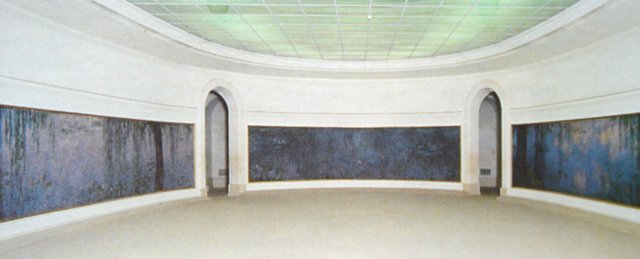April Notes - 2025
The Road Goes Both Ways - The Influence of Western Art on Hokusai
When I visited Japan, I was filled with questions about how the ideas about Japanese art penetrated the French market. In other words, how did Japanese art arrive on the shores of France. With that question in mind I headed south to Kyushu and on to Sasebo, where my friends lived, and with their help I was able to explore where the Dutch traded with Japan from the small, artificial island of Dejima in Nagasaki Bay.
I discovered some unexpected things on this trip. I did not realize that much of southern Japan is Catholic. We visited a cathedral there that imitated European Cathedrals, but the scale dwarfed the European counter-parts. Clearly something was lost in translation. My friends also showed me a Disney-like town Huis Ten Bosch that was constructed to look exactly like a Dutch city, cobble stones and all. I could not wrap my mind around it.
Obviously the influence had not been in one direction. As eager as the French (and Europeans) were to absorb Japanese influence, the Japanese, at least among the artists, were eager to embrace western ideas of perspective, chiaroscuro, and the use of blue pigment.
My trip to Japan formed many of the questions I’ve been talking about here and in my blog posts. This month I have added to my posts on Japonism one on the Western Influence on Hokusai. (see below)
In this carousel, are examples of works by Hokusai that were influenced by Western art. Some of these very pieces, in turn, influenced Manet, Monet, Van Gogh, et al.
HISTORY SPOTLIGHT: Monet’s Grand Decorations at the Musée de L’Orangerie
-
the artwork of the Japanese, he went on to create an entire Japanese garden with bamboo, and Japanese bridge and waterlilies. With Monet’s “Grand Decorations” he merged the world that he created in his garden and the one he created in his studio.
I have written extensively about them in the blog post below.
What many people do not know is that the project was not well received. The building was finally opened soon after Monet had died. The opening was attended by Clemenceau, His dear friend and champion for this project, and then nothing. The press panned it. The world had moved on to the work of Picasso, Matisse and others. It wasn’t until the 1960s and 70s when the Abstract Expressionists took a second look at these late Monet’s did they start getting the attention they deserve.
FROM THE LIBRARY : GIAN CARLO CALZA - HOKUSAI
Katsushika Hokusai (1769-1849) was one of the greatest of the Japanese printmakers, painters and book illustrators. This richly illustrated monograph provides an overview of the master's life and works. Comprising introductory essays, seven chapters embracing Hokusai's entire career and some 700 illustrations, it presents and analyses a large selection of Hokusai's finest works in all media, covering his whole career and giving a scholarly and up-to-date interpretation of the artist and his significance.
Gian Carlo Calza is Professor of East Asian Art History at the University of Ca' Foscari, Venice, and Director of the International Hokusai Research Centre
in Milan. A distinguished authority on Hokusai and Japanese art, he has published many books, exhibition catalogues and articles on Hokusai, and is currently preparing a catalogue raisonnÈ of Hokusai's paintings.
In addition to Calza's eight introductory essays and his catalogue of the artist's works, the book includes discussions of various aspects of Hokusai's art by inter-nationally respected authorities in the field, namely Roger S. Keyes, Visiting Professor in the History of Art at Brown University; Matthi Forrer, Curator at the National Museum of Ethnology, Leiden; John M. Rosen-field, Professor Emeritus of East Asian Art at Harvard University; Richard Lane, independent scholar; Asano Shugo, Curator of the Municipal Museum of Art, Chiba; Tsuji Nobuo, Rector of Tama University of Fine Arts, Tokyo; and Kobayashi Tadashi, Director of the Muni-cipal Museum of Art, Chiba, and Professor of East Asian Art History at the University Gakushuin of Tokyo.
AT THE MOVIES: SACHA GUITRY: CEUX DE CHEZ NOUS - THOSE OF OUR LAND
There is a short silent film from 1915 that captures Claude Monet in his garden in Giverny. The film, titled Ceux de Chez Nous (Those of Our Land), was directed by Sacha Guitry. In the clip, it starts with Renoir painting, then Dégas walking down the streets of Paris and, finally, Monet painting beside his famous water lily pond. You can see the full length film if you click the title above, or you can see just the clip of Monet, Dégas and Renoir if you click on the picture to the right. The original film was silent, but in 1939 a narration was added. I believe Sacha Guitry did the narration.
What fascinates me is how Monet could paint with a palette resting on his arm, while he is wearing a white suit and he doesn’t get any paint on himself. Monet was known to be a bit of a dandy. He often wore shirts with a ruffled cuff.
ART SPOTLIGHT: THE WAY IN
BLOG POSTS RELATED TO JAPONISM















In dawn of the 20th century in France was marked by a vibrant and transformative artistic landscape, with the Impressionist movement having laid a fertile ground for the emergence of diverse modern art expressions.1 At the heart of this era stood Claude Monet, a foundational figure of Impressionism, celebrated for his profound ability to capture the subtle nuances of light and his dedication to exploring singular subjects through extensive series of paintings. Among his most iconic works are those depicting water lilies, a subject with which his name became intrinsically linked in the public consciousness.